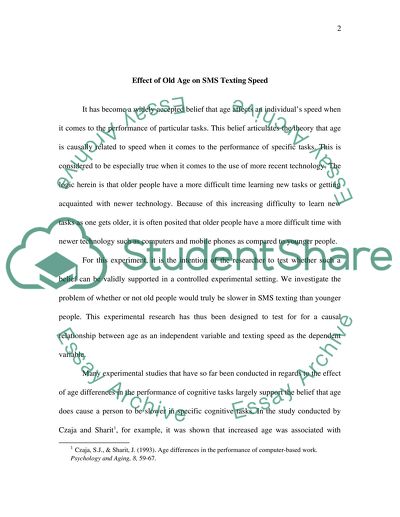Cite this document
(“Effect of Old Age on SMS Texting Speed Essay Example | Topics and Well Written Essays - 1250 words - 1”, n.d.)
Effect of Old Age on SMS Texting Speed Essay Example | Topics and Well Written Essays - 1250 words - 1. Retrieved from https://studentshare.org/psychology/1538414-effect-of-old-age-on-sms-texting-speed
Effect of Old Age on SMS Texting Speed Essay Example | Topics and Well Written Essays - 1250 words - 1. Retrieved from https://studentshare.org/psychology/1538414-effect-of-old-age-on-sms-texting-speed
(Effect of Old Age on SMS Texting Speed Essay Example | Topics and Well Written Essays - 1250 Words - 1)
Effect of Old Age on SMS Texting Speed Essay Example | Topics and Well Written Essays - 1250 Words - 1. https://studentshare.org/psychology/1538414-effect-of-old-age-on-sms-texting-speed.
Effect of Old Age on SMS Texting Speed Essay Example | Topics and Well Written Essays - 1250 Words - 1. https://studentshare.org/psychology/1538414-effect-of-old-age-on-sms-texting-speed.
“Effect of Old Age on SMS Texting Speed Essay Example | Topics and Well Written Essays - 1250 Words - 1”, n.d. https://studentshare.org/psychology/1538414-effect-of-old-age-on-sms-texting-speed.


